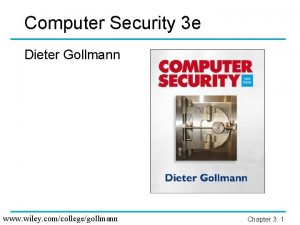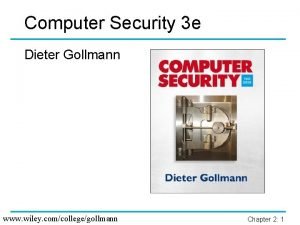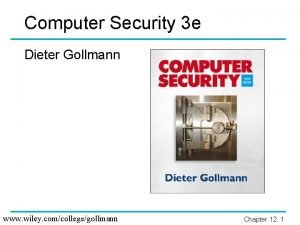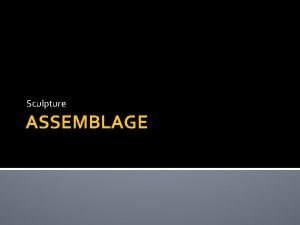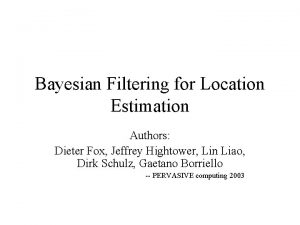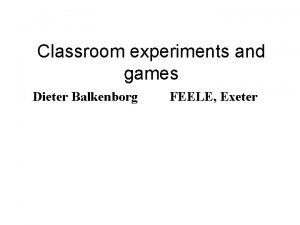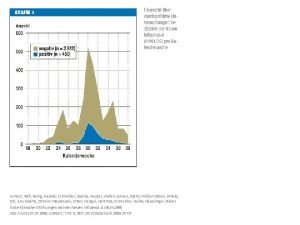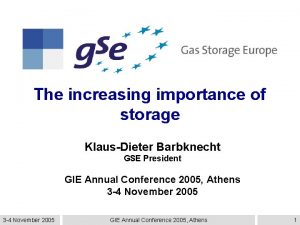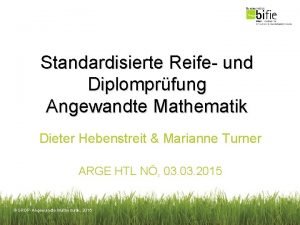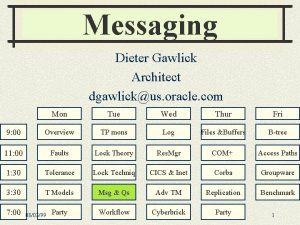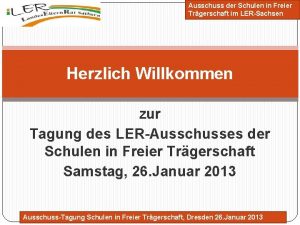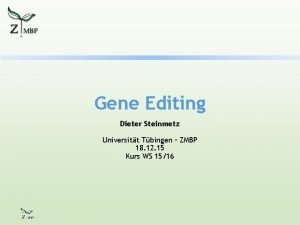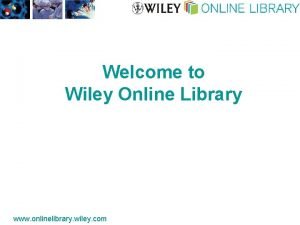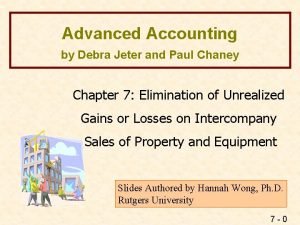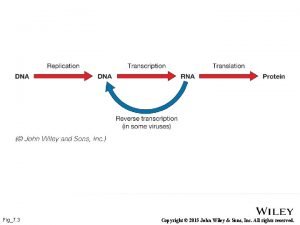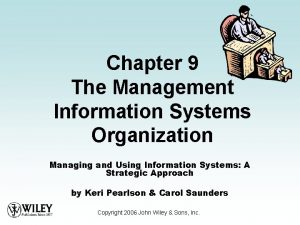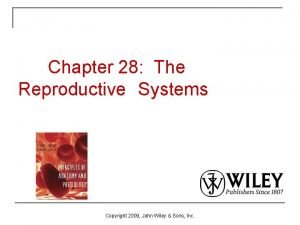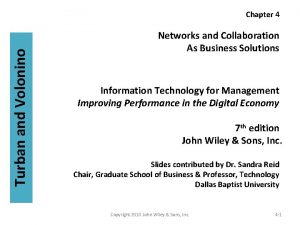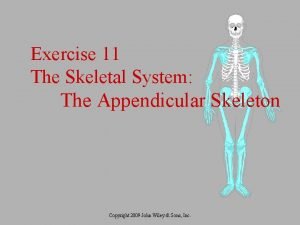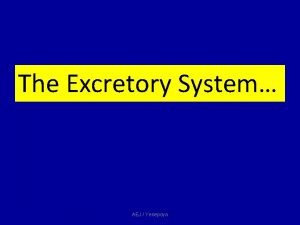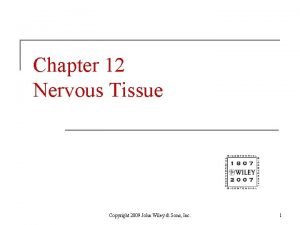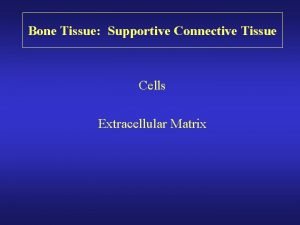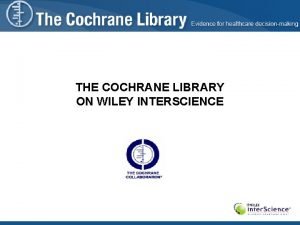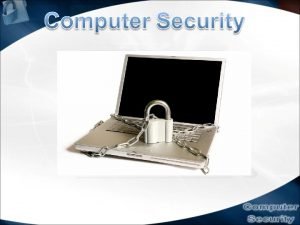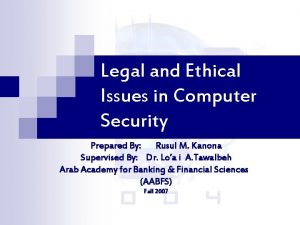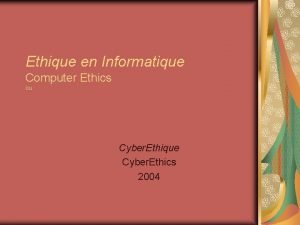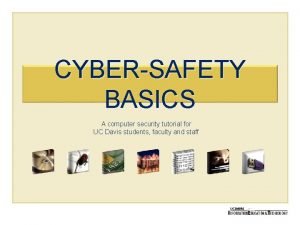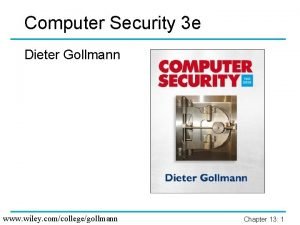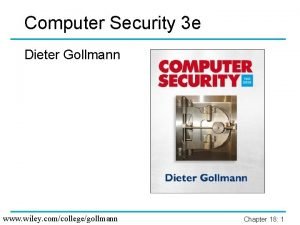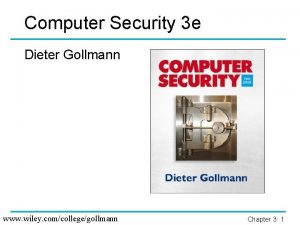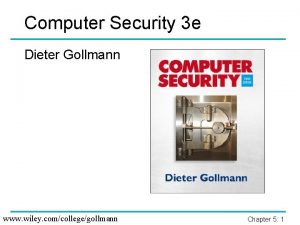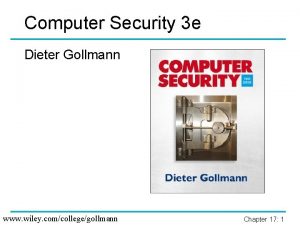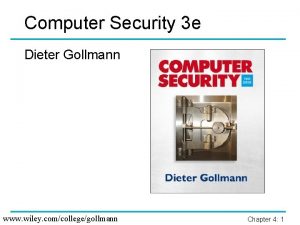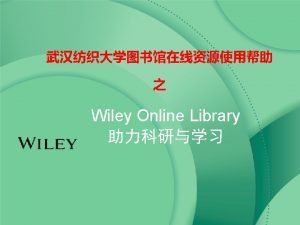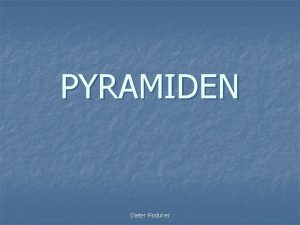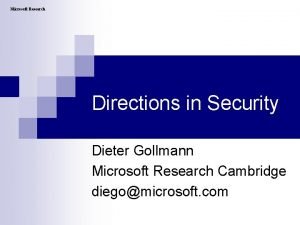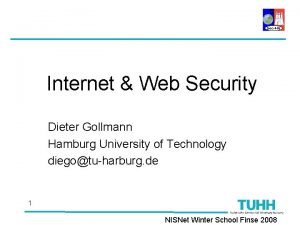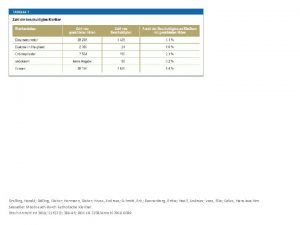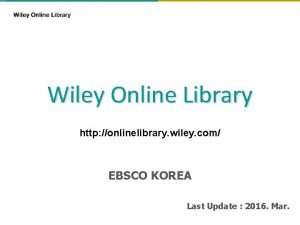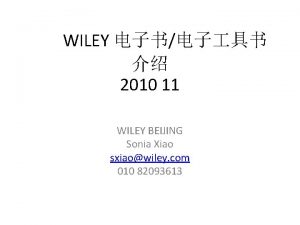Computer Security 3 e Dieter Gollmann www wiley





































































- Slides: 69

Computer Security 3 e Dieter Gollmann www. wiley. com/college/gollmann Chapter 20: 1

Chapter 20: New Access Control Paradigms Chapter 20: 2

Introduction § Internet and world wide web bring ‘security unaware’ users into direct contact with new IT applications. § § § Mobile code from Internet runs on client machines. E-commerce promises new business opportunities. We are faced with considerable change in the way IT systems are being used; do the old security paradigms still fit or do we need new policies and new enforcement mechanisms? Chapter 20: 3

Objectives § § Explore new paradigms for access control. § Present stack walking as the main security enforcement algorithm used in code-based access control. § Give an introduction to the Java security model and the. NET security framework. Explain background and rationale for the move to code-based access control. Chapter 20: 4

Agenda § § § Access Control – Origins SPKI: PKI & access control Trust Management Systems Code-based access control Java and. NET security models Digital Rights Management Chapter 20: 5

Authentication & Authorisation authentication authorisation ACL s principal access request o reference monitor object B. Lampson, M. Abadi, M. Burrows, E. Wobber: Authentication in Distributed Systems: Theory and Practice, ACM Transactions on Computer Systems, 10(4), pages 265 -310, 1992 Chapter 20: 6

Identity-based Access Control § § Access control based on user identities. § Do not confuse the ‘identity’ of a person with a user identity (uid) in an operating systems; a uid is just a unique identifier that need not correspond to a real person (e. g. ‘root’). § RBAC = IBAC + one level of indirection. The kind of access control familiar from operating systems like Unix or Windows. Chapter 20: 7

Fact File § § § § This model originated in ‘closed’ organisations (‘enterprises’) like universities, research labs. Organisation has authority over its members. Members (users) can be physically located. Access control policies refer naturally to user identities: ACEs associated with known people. Audit logs point to users who can be held accountable. Access control seems to require by definition that identities of persons are verified. Biometrics: strong identity-based access control? Chapter 20: 8

Further Aspects § § Access rules are local: no need to search for the rule that should be applied; the rule is stored as an ACL with the object. Enforcement of rules is centralized: reference monitor does not consult other parties when making a decision. Simple access operations: read, write, execute; single subject per rule; no rules based on object content. Homogeneity: the same organisation defines organizational and automated security policy. Chapter 20: 9

Change of the 1990 s § Internet connects us to parties we never met before: Ø Their ‘identity’ can hardly figure in our access rules. Ø We are not always able to hold them accountable. § § § Java sandbox: it is not necessary to refer to users when describing or enforcing access control. Access controlled at the level of applets, not at the granularity of read/write/execute. Instead of asking who made the request, ask what to do with it. Chapter 20: 10

Access Control in an ‘open’ World evidence Code id, session id, privileges, location, sender id, … access request Verify evidence provided Associate local evidence (security context) with request authentication reference monitor Find relevant policy, evaluate whethere is sufficient evidence to grant request authorisation Chapter 20: 11

What has changed with the web? § § Separation of program and data gets blurred; executable content (applets, scripts) embedded in interactive web pages that can process user input. Computation moves to the client; client needs protection from rogue content providers. Ø Lesson of the early PC age: floppy disks from arbitrary sources were the route for computer virus infections. § Client asked to make decisions on security policy and on enforcing security; end user becomes system administrator and policy maker. § Browser becomes part of the TCB. Chapter 20: 12

Changes in the Environment § § § When organisations collaborate, access control can be based on more than one policy. Potential conflicts between policies have to be addressed. How to export security identifiers from one system into another system? Decisions on access requests may be made by an entity other than the one enforcing the decision. How does a user know which credentials to present? Chapter 20: 13

Splitting the Reference Monitor § Policy administration point (PAP): creates a policy or policy set. § Policy decision point (PDP): evaluates applicable policy and renders an authorization decision. § Policy enforcement point (PEP): performs access control, by making decision requests and enforcing authorization decisions. § Policy information point (PIP): acts as a source of attribute values. Chapter 20: 14

SPKI Trust Management Chapter 20: 15

SPKI § Old paradigm: access rules stored locally in protected memory. § Decentralized access control: protect integrity of access rules by cryptographic means; encode rules in digitally signed certificates. § Identity-based access control can be implemented with X. 509 identity certificates. § SPKI (Simple Public Key Infrastructure, RFC 2692, 2693): PKI for access control (authorization) that works without user identities. Chapter 20: 16

Local and Global Names § § Names in access control have a local meaning within a security domain; serve as pointers to access rights. Interaction between domains: we need to refer to names from other local name spaces; we require globally unique identifiers for name spaces to avoid confusion about names. Public/private key pairs generated at random are unique with high probability; public key of an issuer (or its hash) can serve as unique identifier for the name space defined by that issuer. Name certificates signed with the private key define a name in the local name space. Chapter 20: 17

Access Rights § Access rights bound directly to public keys through authorization certificates. § Authorization certificates contain at least an issuer and a subject, and may also include a delegation bit, authorizations, and validity conditions. § Issuer sets policy by signing a certificate and thereby authorizing the subject. § Subject is typically a public key, the hash of a key, or the name for a key. § Root key for verifying certificate chains stored in an ACL. Chapter 20: 18

SPKI: Access Control subject ID certificate for audit public key access right authorization certificate Key-centric access control, ID certificates for accountability Chapter 20: 19

SPKI Policy § Tuples: abstract notation for certificates or ACL entries: 1. 2. Issuer: public key (or “Self”) Subject: public key, name identifying a public key, hash of an object, … Delegation: TRUE or FALSE Authorization: access rights Validity dates: not-before date and not-after date 3. 4. 5. Chapter 20: 20

Tuple Reduction Algorithms Evaluates ‘certificate chains’. Authorisations and validity periods can only be reduced. Input: <Issuer 1, Subject 1, D 1, Auth 1, Val 1> <Issuer 2, Subject 2, D 2, Auth 2, Val 2> IF Subject 1 = Issuer 2 AND D 1 = TRUE THEN output <Issuer 1, Subject 2, D 2, AIntersect(Auth 1, Auth 2), VIntersect(Val 1, Val 2)> Chapter 20: 21

SPKI – Evaluation § SPKI Certificate Theory recommended reading on names, access control, etc. § Oriented towards access control and away from global CA hierarchies; separation of concerns: Ø ID certificates for accountability Ø Attribute and authorisation certificates for access control: certificates distributed storage of ACLs § SPKI standardizes (prescribes? ) policy decisions: e. g. only permissions held by delegator can be delegated; does not support separation of duties. Chapter 20: 22

Trust Management § Traditionally, access rules found in a well defined place: ACL in a parent directory. § Traditionally, a subject presents its credentials and the reference monitor decides on the basis of the input it has received, and does not ask third parties for decisions. § In open environments, we frequently encounter situations involving third parties. Chapter 20: 23

Example § Service Level Agreement between telecom providers X and Y that gives customers from X access to the services offered by Y. Ø Y will not get a list of all subscribers from X. Ø X issues its subscribers with certificates and gives Y the required verification key. Ø Subscribers from X request services from Y by presenting their certificates. Ø Provider Y calls back X to perform an on-line status check on the certificates, ‘deferring’ this check to X. Ø Reply from X is input to Y’s decision. Chapter 20: 24

Trust Management § § § A unified approach to specifying and interpreting security policies, credentials, and relationships introduced in Policy. Maker M. Blaze, J. Feigenbaum, J. Lacy: Decentralized Trust Management, 1996 IEEE Symposium on Security & Privacy. Generalize rules: instead of ACLs, use a programming language to express assertions. Assertion: bind a public key to a predicate on actions. Ø Authorizes an action if a digitally signed request to perform this action can be verified with the public key given in the assertion and if the action satisfies the predicate. Chapter 20: 25

Trust Management § Credentials can directly authorize actions, there is no need to authenticate a user (like in SPKI). § Distribute authority: assertions can be local (‘policies’) or be signed by another authority (‘credentials’). § Trust management engine (compliance checker) answers question: “Does the set C of credentials prove that the request r complies with the local security policy P? ” § Trade-off between expressiveness of the language and complexity of the compliance checker. Chapter 20: 26

Code-based Access Control Chapter 20: 27

Code-based Access Control § If we cannot rely on a principal who makes the request for access control decisions, we can only look at the request itself. § Requests can be programs, rather than elementary read/write instructions. § Code-based access control: access control where permissions are assigned to code. § Major examples: Java security model, . NET security framework (code access control). Chapter 20: 28

Access Control Parameters § Security attributes of code could be: Ø Site of code origin: local or remote? Ø URL of code origin: intranet or Internet? Ø Code signature: signed by trusted author? Ø Code identity: approved (‘trusted’) code? Ø Code proof: code author provides proof of security properties; Ø Identity of sender: principal the code comes from; Ø … Chapter 20: 29

Call Chains § § In code based-access control, when a process calls another function, access decisions refer to access rights assigned to that function. Should the calling process also ‘delegate’ some of its access rights to the process executing the function being called? Should the calling process limit the access rights of the function executing the program being called? These questions are put in new focus in code-based access control. Chapter 20: 30

Call Chains A § § § B R Which privileges should be valid when one function calls another function? Example: function A has access right to resource R, B does not; A calls B, B requests access to R: Should access be granted? The conservative answer is ‘no’, but A could explicitly delegate the access right to B. Chapter 20: 31

Call Chains B § § A R Example: function A has access right to resource R, B does not; B calls A, A requests access to R: Should access be granted? The conservative answer is ‘no’, but A could explicitly assert its access right. Chapter 20: 32

Enforcing Policies § § § How to compute current permissions granted to code? § § Design decision: re-use call stack for policy evaluation. Access decisions should know about entire call chain. Information about callers maintained on call stack used by Java VM and. NET CLR for managing executions. Lazy evaluation: evaluate granted permissions just when a permission is required to access a resource. Chapter 20: 33

Dynamic Stack Inspection § § Record for each stack frame the security permissions of the function. Rights of final caller are computed as the intersection of the permissions for all entries on the call stack. A B effective rights = rights(B) rights(A) … Chapter 20: 34

Limits of Stack Inspection § Access control explained in terms of the runtime stack for implementation reasons (lazy evaluation). Ø Performance? Common optimizations are disabled. Ø Security: What is guaranteed by stack inspection? Hard to relate to high-level security policies. § Two concerns for developers: Ø Untrusted component may take advantage of my code. Ø Permissions may be missing when running my code. § Stack inspection is blind to many control and data flows: Ø Parameters, results, mutable data, objects, inheritance, § callbacks, events, exceptions, concurrency… Each case requires a specific discipline or mechanism. Chapter 20: 35

History-Based Access Control § Don’t be lazy, keep track of callers’ rights proactively (eager evaluation). § Static rights (S) associated with each piece of code at load time. § Current rights (D) associated with each execution unit, updated automatically at execute time from the caller’s current rights and the callee’s static rights (D: = D S). Ø May be modified using grant and accept patterns. Ø A. Gordon and C. Fournet: Stack Inspection: Theory and Variants, ACM Transactions on Programming Languages and Systems 25(3): 360 -399 (May 2003). Chapter 20: 36

Java Security Chapter 20: 37

Java Security § Java: strongly typed object-oriented language; general purpose programming language. § Java is type safe; the type of a Java object is indicated by the class tag stored with the object § Static (and dynamic) type checking to examine whether the arguments an operand may get during execution are always of the correct type. § Security advantage: no pointers arithmetic; memory access through pointers is one of the main causes for security flaws in C or C++. Chapter 20: 38

Java – Overview § Java source code translated into machine independent byte code (similar to an assembly language) and stored in class files. § Platform specific virtual machine interprets the byte code translating it into machine specific instructions. § When running a program, a Class Loader loads any additional classes required. § Security Manager enforces the given security policy. Chapter 20: 39

Java Execution Model Java Source Code Compiler (Web Page) Java Byte Code Java Runtime Byte Code Verifier Class Loader executable Security Manager Chapter 20: 40

JDK 1. 1 Security Model local code remote code (applet) trusted (signed) code (added in version 1. 1) full access to resources Sandbox restricted access Security Manager system resources Chapter 20: 41

Discussion § Basic policy is quite inflexible: Ø Local/signed code is unrestricted. Ø Applet/unsigned code is restricted to sandbox. § No intermediate level: Ø How to give some privileges to a home banking application? § Local/remote is not a precise security indicator: Ø Parts of the local file system could reside on other machines; Ø Downloaded software becomes “trusted” once it is cached or installed on the local system. § For more flexible security policies a customized security manager needed to be implemented. Ø Requires security AND programming skills. Chapter 20: 42

Java 2 Security Model § Java 2 security model no longer based on the distinction between local code and applets. § Applets and applications controlled by the same mechanisms. § Reference monitor of the Java security model performs fine-grained access control based on security policies and permissions. § § Policy definition separated from policy enforcement. Single method check. Permissions() handles all security checks. Chapter 20: 43

Byte Code Verifier § § § Analyses Java class files: performs syntactic checks, uses theorem provers and data flow analysis for static type checking. There is still dynamic type checking at run time Verification guarantees properties like: Ø Class file is in the proper format. Ø Stacks will not overflow. Ø All operands have arguments of the correct type. Ø There will be no data conversion between types. Ø All references to other classes are legal. Chapter 20: 44

Class Loaders § Protect integrity of the run time environment; applets are not allowed to create their own Class Loaders and should not interfere with each other. § Vulnerabilities in a class loader are particularly security critical as they may be exploited by an attacker to insert rogue code. § Each Class Loader has its own name space; each class labeled with Class Loader that has installed it. Chapter 20: 45

Security Policies § § Security policy: maps a set of properties that characterizes running code to a set of access permissions granted to the code. Code characterized by Code. Source: Ø origin (URL) Ø digital certificates Permissions contain target name and set of actions. Level of indirection: permissions granted to protection domains: Ø Classes and objects belong to protection domains and ‘inherit’ the granted permissions. Ø Each class belongs to one and only one domain. Chapter 20: 46

Security Manager § Security Manager: reference monitor in the JVM; security checks defined in Access. Controller class. Ø Uniform access decision algorithm for all permissions. § § Access (normally) only granted if all methods in the current sequence of invocations have the required permissions (‘stack walk’). Controlled invocation: privileged operations; do. Privileged() tells the Java runtime to ignore the status of the caller. Chapter 20: 47

Summary § § § Java 2 security model is flexible and feature-rich; it gives a framework but does not prescribe a fixed security policy. JAAS (Java Authentication and Authorization Service) adds user-centric access control. Sandbox enforces security at the service layer; security can be undermined by access to the layer below: Ø users running applications other than the web browser. Ø attacks by breaking the type system. Chapter 20: 48

. NET Security Framework Chapter 20: 49

. NET Components § Common Language Runtime (CLR): common runtime system for a variety of programming languages; loads and executes code, performs security checks (similar to JVM). § C#: Type-safe programming language developed by Microsoft (similarities to Java; builds to some extent on experiences gained from using Java. ) § MSIL: Microsoft Intermediate Language (conceptually similar to Java byte code. ) Chapter 20: 50

Managed Code § Native code: code compiled to machine language for a specific hardware platform; not controlled by CLR. § § Unmanaged code = native code § Assembly: logical unit of IL code in. NET framework, usually a single managed DLL or EXE file. § App domains: ‘mini-processes’ within processes; ‘management layer’ above assemblies. § All. NET code has to run in an app domain. Managed code: code compiled to run in the. NET framework; controlled by the CLR. Chapter 20: 51

Access Control Model § § Evidence: information about the origin of code. § Authorize code, not users to access resources; security policies refer to evidence (about assemblies). § Enforce authorisation decisions made on individual pieces of code, such as assemblies. Authenticate code identity: collect and verify evidence about a piece of code (an assembly). Chapter 20: 52

Application Domains process App domain 1 Assembly 2 App domain 2 Assembly 1 Assembly 2 Assembly 3 Chapter 20: 53

Default Evidence Classes § § § § Application Directory Hash Permission Request Evidence: states the permissions an assembly must have to run. Publisher Web Site Strong Name URL Zone: Security zone as in Internet Explorer Chapter 20: 54

Strong Names § § Assemblies are referenced through names. Strong names: public key as ‘identity’ of the publisher (but no third party certificate!). Ø Creates separate name spaces for assembly names. § Assemblies protected by digital signatures: Ø Publisher’s (name space) public key given in metadata. Ø Digital signature computed and written into assembly during compilation. Ø Provides origin authentication (w. r. t. name space and data integrity. Chapter 20: 55

Strong Names (ctd) § Strong names: public key cryptography without a Public Key Infrastructure. § § The public key is in fact the ‘identity’ of the publisher. § Security policies must refer to this key and not to any name associated with it; someone else might associate the same name with a different key. § Difference to Authenticode: authenticode certificates issued by a CA like Veri. Sign vouch (to some extent) for the binding between name and public key. Method for locally creating globally unique names nobody else can create. Chapter 20: 56

Associating Evidence § § § Evidence applies to executing code. Evidence dynamically calculated when code is running; e. g. the URL of origin is usually not known in advance. Evidence associated with assemblies and with application domains (app domains). Chapter 20: 57

Providing Evidence § Host-provided evidence: Ø Host: unmanaged entity that initiates the CLR (e. g. Internet Explorer) or managed code launching other managed code. Ø The kind of evidence mentioned so far. § Assembly provided evidence: Ø Provided by an assembly itself. Ø Cannot override host-provided evidence. Ø Can be any object application specific access control. Ø Custom code needed to process such evidence. Chapter 20: 58

Permissions § Permission: privilege that can be granted to. NET code, e. g. write to file system Ø Code access permissions: standard permissions. Ø Identity permissions: indicate that an assembly has a certain piece of evidence. Ø Other permissions: e. g. Principal. Permission represents a user identity. § § § Built-in permissions and permission sets. Granted by the security policy: takes evidence as input and returns permissions. Demanded by. NET assemblies: required permissions to access resource. Chapter 20: 59

Declarative & Imperative Security § Declarative security actions: stored in the assembly’s metadata. Ø Can be easily (statically) reviewed on assemblies. Ø Occur at the beginning of a method. Ø Can be placed at class level. § § JIT-time security actions can only be expressed in in declarative form. Imperative security actions: stored in IL code. Ø More complex security logic possible. Ø Necessary with dynamic parameters. Chapter 20: 60

Enforcing Policies § Granted permissions of an assembly derived from evidence by evaluating membership conditions. § Code groups and policy levels for managing policy specification. § Enforcement: stack walk, goes through the call stack and checks for required permission. Ø No check against the method making the request. § Assert, Deny, Permit. Only: operations that attach permissions to current stack frame; removed when returning from that method. Chapter 20: 61

Resolving Permissions assembly … … evidence membership condition code group permission set Chapter 20: 62

Modifying the Stack Walk § Assert: terminates stack walk for a given permission granting this permission (all frames examined so far also have the permission. ) Ø Does not terminate the stack walk if the granted permissions are insufficient for the request. Ø Allows “untrusted” callers to call the method successfully. § Deny: terminates stack walk raising an exception. Ø Check at run time; mainly useful for testing. Ø Do not put the check for the denied permission in the same method as the ‘deny’. § Permit. Only: terminates stack walk raising an exception unless stated permissions are satisfied. Chapter 20: 63

. NET Summary § . NET CLR provides code-identity-based access control. § § Stack walk used as security enforcement algorithm. Numerous means for structuring security policies. Ø Open question: How to best assign permissions to assemblies? § To use these means in practice you have to study the details of the. NET framework. Chapter 20: 64

Digital Rights Management Chapter 20: 65

Digital Rights Management § § Digital Rights Management (DRM): enforce vendor policies on a customer machine. Departure from ‘old’ access control paradigm: Ø Policies enforced on a system are no longer set by the owner but by an external party. Ø Adversary is no longer an external party trying to subvert the system but an owner trying to bypass the policy. Ø Security goal: integrity of the access control system, as interpreted by the external party. § To achieve this goal, try to make it difficult for the owner to change the policy settings. Chapter 20: 66

DRM & TPM § On a PC, owner is in control of all software loaded; place protection mechanism at hardware layer. § Content provider asks for a truthful report about the hardware and software configuration of a target machine before agreeing to a download. § Solution can be implemented on a Trusted Platform Module (TPM) running an attestation protocol. § TPM is the root of trust for the content owner. Chapter 20: 67

DRM & Mobile Devices § DRM approach for mobile devices: Ø Create domain managed by an authority, e. g. Android Ø Ø Ø § market. Install public verification key of the authority on user devices. Application requiring operating system privileges has to be submitted to the authority; authority validates that application does not abuse the privileges requested. Approved applications signed by the authority. Applications installed on user devices with their signatures. Operating grants privileges only to applications with valid signatures. Authority and operating system are root of trust for content provider. Chapter 20: 68

DRM & Watermarking § Digital watermarks embed information about owner or customer in content; main issues: Ø Difficulty of removing or modifying watermarks. Ø Impact on the quality of audio and video content. § Threat models: Ø Adversary is an unsophisticated user who will shy away from manipulating his device and just “should be kept honest”. Ø Adversary is a technically skilled user who wants free access to content for private use. Ø Adversary is an organisation wanting to sell pirated content. § Non-technical DRM approach: take recourse to the legal system. Chapter 20: 69
 Computer security dieter gollmann
Computer security dieter gollmann Computer security dieter gollmann
Computer security dieter gollmann Chinese wall model
Chinese wall model Privat security
Privat security Additive process in art
Additive process in art Dieter eppler pilot
Dieter eppler pilot Dieter bohlen sternzeichen
Dieter bohlen sternzeichen Dieter fox
Dieter fox Klaus dieter frey
Klaus dieter frey Slidetodoc.com
Slidetodoc.com Feele exeter
Feele exeter Sophie schneitler
Sophie schneitler Klaus-dieter barbknecht
Klaus-dieter barbknecht Aufgabenpool mathematik ahs
Aufgabenpool mathematik ahs Dieter gawlick
Dieter gawlick Dieter dresch
Dieter dresch Dieter aschenbrenner
Dieter aschenbrenner Hans dieter frey
Hans dieter frey Dieter timmermann
Dieter timmermann Dieter binder
Dieter binder Steinmetz kurs
Steinmetz kurs Dieter steinmetz
Dieter steinmetz Dieter röhrich
Dieter röhrich Dieter timmermann
Dieter timmermann Dieter horns
Dieter horns Onlinelibrary-wiley-com
Onlinelibrary-wiley-com Jean butler genie
Jean butler genie Advanced accounting wiley
Advanced accounting wiley Genie wiley
Genie wiley Wuthering heights themes
Wuthering heights themes Capillary
Capillary Kehinde wiley bio
Kehinde wiley bio John wiley & sons, incorporated
John wiley & sons, incorporated Mis chapter 9
Mis chapter 9 John wiley & sons
John wiley & sons John wiley
John wiley Copyright search
Copyright search John wiley & sons, inc.
John wiley & sons, inc. Kehinde wiley barack obama
Kehinde wiley barack obama John wiley
John wiley Sacroiliac bone
Sacroiliac bone Www.interscience.wiley.com
Www.interscience.wiley.com Elbow joint diagram
Elbow joint diagram Ward v. wilbanks
Ward v. wilbanks Wiley
Wiley Secretion
Secretion Vasopressin function
Vasopressin function 9/11
9/11 Flykda
Flykda Chemical equation of phosphorus
Chemical equation of phosphorus Continuous vs saltatory conduction
Continuous vs saltatory conduction Wiley
Wiley Cochrane wiley
Cochrane wiley Organic chemistry
Organic chemistry What is the osi security architecture
What is the osi security architecture Guide to network security
Guide to network security Wireless security in cryptography and network security
Wireless security in cryptography and network security Explain about visa international security mode
Explain about visa international security mode Electronic mail security in network security
Electronic mail security in network security What is nstissc security model
What is nstissc security model Security policy and integrated security in e-commerce
Security policy and integrated security in e-commerce Building security software
Building security software Security guide to network security fundamentals
Security guide to network security fundamentals Security guide to network security fundamentals
Security guide to network security fundamentals Basic components of computer security
Basic components of computer security Legal, social, ethical and professional issues in computing
Legal, social, ethical and professional issues in computing Legal and ethical issues in computer security
Legal and ethical issues in computer security Computer ethics and cyber security
Computer ethics and cyber security Computer security tutorial
Computer security tutorial Computer security 161 cryptocurrency lecture
Computer security 161 cryptocurrency lecture
